
We all know why the hypnotist plants his employees in the audience…
And why TV comedies use laugh-tracks…
And why the barista starts his morning by seeding the tip jar…
It’s because people need to believe that they are one member of a large herd that believes X, is entertained by Y, or does Z. Nobody wants to be the first or only one to do something. There’s safety in numbers (see picture above).
That’s the idea behind the oh-so-popular principle of social proof, which you’ll recall from Dr. Cialdini’s Influence, among other books and articles:
“People see an action as more appropriate when others are doing it.”- Robert Cialdini
Want someone to be open to hypnosis? Show that others have been successfully hypnotized.
On the web, social proof comes in a variety of forms – or indicators of social approval / disapproval – that you can easily use on your landing pages and blog posts, including:
- Number of tweets, followers, likes…
- Number of comments
- Star ratings
- Number of reviews
- Written testimonials
- Video testimonials
The entire point in using social proof on your landing page or post is to influence your visitor in ways copy alone simply can’t…
…But what if you have 0 tweets on a post or page?
I’ve heard some people refer to a lack of social proof as “low social proof”. But there’s no such thing as “low social proof”. A lack of testimonials says just as much as a plethora of them – it just tells a negative story instead of a positive one…
Let’s explore 3 types of negative social proof… and how you can neutralize them or turn your visitors’ perceptions around.
3 Ways Your Social Proof May Be Working Against You
You’ve got positive social proof, negative social proof and neutral social proof. When we’re trying to encourage our visitors to convert, we want positive or neutral social proof – never negative. Negative social proof happens when you’ve got a) no evidence of people talking about you or b) evidence that the wrong kind of people are talking about you.
1: No Testimonials… or Pathetically Weak Testimonials
So let’s say you were running a huge software company with a massive marketing budget. You’d recently launched a new operating system, and you wanted students to buy it. But you knew that you were decidedly uncool in the eyes of those students…
You’d probably want to make a landing page for students that, say, uses video testimonials from other students? To up your cool factor? …Unless, of course, you were Microsoft:
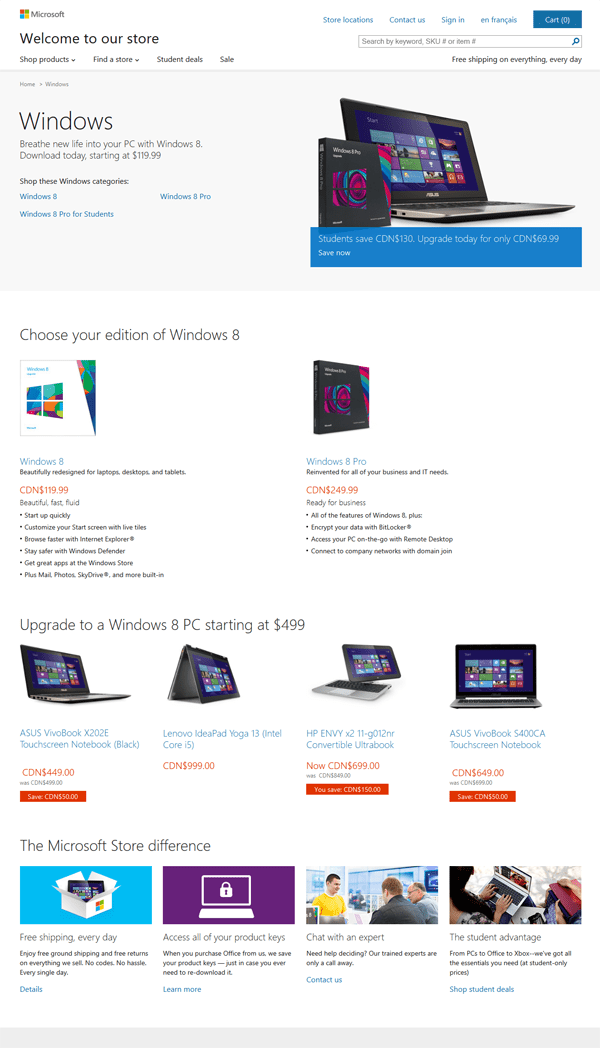
Product shots are great… but how about an image of a person who looks like me (i.e., a student) alongside a testimonial about how cool Windows 8 is? No testimonials on this landing page – or, in fact, on any of the pages that follow in this experience – is negative social proof. It’s telling visitors that no one else cares enough to give Windows 8 a glowing testimonial. The subtext? This OS probably sucks.
Just as bad is the weak testimonial. A weak testimonial either says little more than “I love this product” or is so filled with robotic lingo that it’s virtually meaningless…
Here’s an example from an Avaya landing page:
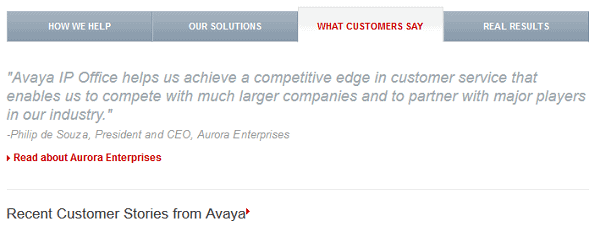
Who is that testimonial helping? What is it really saying about Avaya?
To sum this up, yes, you need testimonials to show that others trust and use you. But be careful that those testimonials tell rich, natural-language stories… or they’re bound to have little impact and may, in fact, work against you.
2: Irrelevant or Poor-Match “Name Dropping”
Okay, so one of the best ways to make your social proof work for you is to ensure that your testimonials come from people who are very similar to your prospects.
You want your prospect to relate. More often than not in copywriting, we want our visitors to see themselves on the page – just like they’re looking into a mirror. That’s why you need to use relevant testimonials.
For B2B, a relevant testimonial:
- is given by someone your prospect is already like
- is given by someone your prospect can reasonably see themselves being in 3-5 years
- is given by someone at a company similar to your prospect’s company
- is given by someone at a company admired by your prospect
On the Unbounce home page, we see a great example of a relevant testimonial – one give by a person at a company most growing businesses admire:

But now let’s look at a little negative social proof. Marie Forleo helps female micropreneurs become awesome. She’s amazeballs – I love watching her videos – but her About page falls victim to some very liberal name-dropping comprised of photos of her with Sir Richard Branson, Tony Robbins, Russell Simons, Donna Karan and none other than Oprah…

Freakin’ Oprah! Do you feel like you could hang with Oprah? I don’t!
So what might such social proof actually prove to people beginning to learn about Marie Forleo?
Surely that she’s got some influential friends and, as such, probably knows her stuff. …But also that she may be slightly out of touch with the average female micropreneur. It might be producing the opposite of the intended effect! Her social proof is beyond aspirational… Would it not make more sense for her to pepper in some photos of herself with female micropreneurs who are notably successful?
QuickSprout does a good job of using relevant testimonials to create positive social proof:
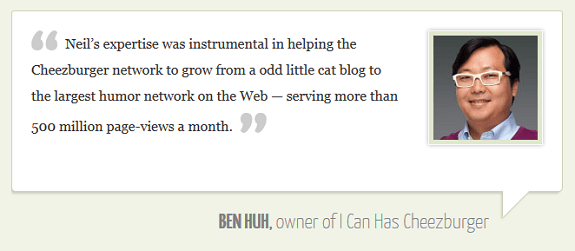
Help Scout also rocks some testimonials that not only tell a rich story quickly… but also come from likable people we can relate to:
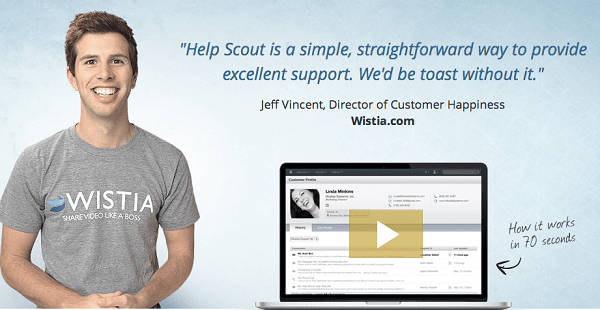
So don’t drop massive names. You don’t need the world’s most influential people to talk about you in order for your visitors to feel the positive effects of your testimonials…
3: A Lack of Likes and Tweets (and Comments on Your Blog)
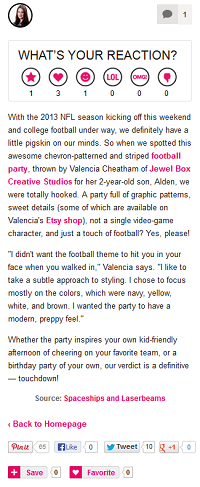 We’ve been talking about testimonials on your landing pages, but what about tweets and follower counts?
We’ve been talking about testimonials on your landing pages, but what about tweets and follower counts?
Almost every landing page incorporates a Twitter, Facebook or G+ button of some kind. …But should they? Take a look at the ‘reactions’ in the image shown to the right.
A lack of a reaction IS a reaction.
The ease of sharing a post today – with Buffer and Flares – means that a lack of shares is worse than ever. It takes a max of 2 clicks to tweet someone’s post… so if you’ve got no tweets, you’re saying this: My content is so bad that people won’t even waste a click on it… and you shouldn’t either.
Now, that doesn’t mean that all content that fails to get shared is poor content. Not at all. There’s tons of amazing stuff out there that no one tweets or talks about. But the actual quality isn’t the point; the perception of quality is. Showcasing that no one is talking about you is negative social proof, and you can control that by applying a few of the following tips…
How to Neutralize Negative Social Proof
If people aren’t tweeting about you yet, the whole world doesn’t need to know that! Follow these tips to keep negative social proof at bay:
- Remove Twitter, Facebook and G+ share buttons from your posts, and add them back only when your site has real traction and/or your visitors have been shown to share
- Never put social sharing icons on pages that won’t get shared, like your squeeze or lead gen page
- If you don’t have a lot of email or RSS subscribers, simply don’t show that number! No one needs to know you’ve only got 116 people signed up to hear from you
- If you don’t have testimonials yet – and even if you do! – embed the best tweets you’ve received from your followers
Twitter may be the only testimonial collection platform you need, thanks to their embed functionality. But if your followers aren’t active Twitter users, consider using a tool like CustomerSure to make collecting testimonials part of your process.
Finally, a really great and pretty commonly used trick for generating more comments on your posts is to remove dates from your blog posts, as Copyblogger does:

With dates removed, visitors arriving organically or via your email list won’t make assumptions about interest in your blog when, for example, they see that your post is from 2009 and you’ve only got 3 comments.
On Social Triggers, Derek Halpern takes this strategy even further by showing the total comments only when you get to the bottom of his post.
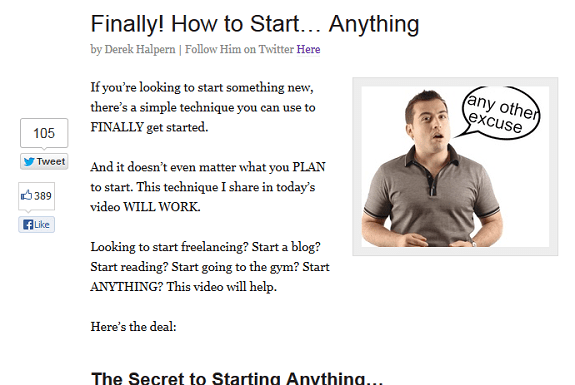
Is a perception of outdated content that no one cared about negatively impacting your blog?
BONUS: The Too-Cool Approach to Social Proof
If you’re a rockstar, you can always pull a Jack White and essentially give the finger to the entire idea of testimonials as he does on his home page:

But if you’re not a rockstar – or not one yet – stick to the essentials. Work with your visitors’ tendencies to join the herd, and hide any elements that may make them think they’re alone in being interested in you…
Social proof exists for you whether you like it or not… in the same way your brand exists whether you like it or not. Just because you don’t consciously shape your brand doesn’t mean you don’t have a brand… and just because you don’t put testimonials on your site or try to generate followers doesn’t meant that you don’t have social proof. You do.
You are proving something with your use of – or failure to use – indicators of social approval.
Are you proving what you think you are?
